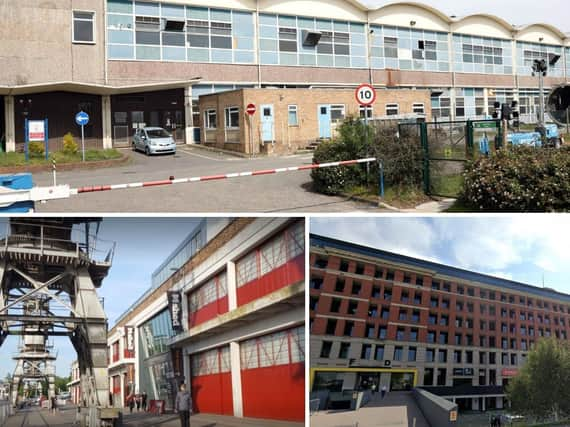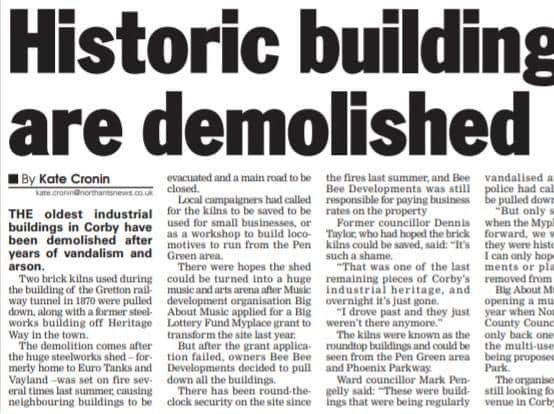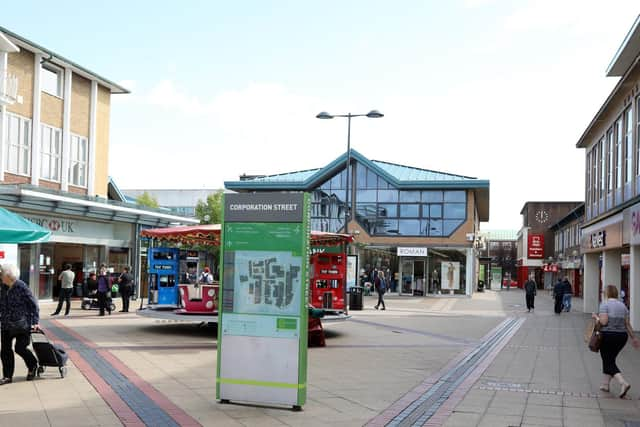OPINION: If we don't start preserving Corby's industrial history now, then when?


Everywhere you look in Corby are relics of a proud manufacturing and industrial history that our town was built on.
With its arced-roof, its reinforced concrete stilts and its modernist entrance, the largely-preserved facade of the British Sealed Beams factory in Earlstrees Road is a cracking example of mid-1900s industrial architecture, says Corby reporter Kate Cronin.
Advertisement
Hide AdAdvertisement
Hide AdAnd it's now been announced that the building is set to be demolished.


Built just as the swinging 60s were getting under way, the factory, based on what was then the very edge of new Corby, offered a decent wage, a close-knit workforce and even an on-site social club which later became the Earlstrees Club on the site of Hooke Close. Workers went on strike for 19 days in 1971 demanding an extra £8 per week, and although the company didn't acquiesce to all their demands, they did their bit for some of the workers' rights that we all enjoy today.
And while it only lasted 17 years as a lighting manufacturer, the site soon became home to Weetabix where one of the nation's favourite cereals rolled off the production lines for years.
And although I love its zigzag portico, its floating office on the first floor, and its soft, wave-like roof, to some, I accept, it might be a concrete and asbestos carbuncle, a slightly downtrodden relic of a former era when factories didn't have to be corrugated metal boxes with roller-shutter doors.
Advertisement
Hide AdAdvertisement
Hide AdBut we don't have many buildings like this left in Corby. Most of them have been swept away as manufacturing and logistics have developed, modernised and expanded.


These are our building blocks. These are the places that stuck with our town, that still offered decent, steady jobs when post-steelworks Corby was getting back on its feet.
So many of the landmark buildings constructed amid the explosion of our town are already gone - the Civic, most of the secondary schools, the bus station, the Welfare, The Open Hearth. And it's almost unthinkable now that thatched cottages of the Old Village were bulldozed without a second thought.
The New Town of Corby might have a short history, but it's a proud one, and at some point we are going to have to start to cherish the buildings that are visual reminders of the foundations of this town.
Advertisement
Hide AdAdvertisement
Hide AdManchester turns its industrial buildings into entertainment venues, apartments, restaurants and exhibition centres, Birmingham preserves the facades of its factories and turns them into hotels, Bristol uses them as museums, Liverpool as TV studios. But in Corby, we flatten them to make way for houses or modern warehouses.
We do need houses, desperately, and this may well be a good site to put them on. We can't keep everything, we have to progress and move on as a town if we are to be fit for the modern world and provide somewhere for the next generation to live.
Not all of our factories and warehouses are pretty, and some of them we wouldn't even notice if they were gone. But this one has stood for 60 years and still has echoes of the Corby men and women who worked their fingers to the bone there to provide for their families.
With a bit of creative thinking, some of the facade could have been preserved and incorporated into new buildings there. The concrete stilts could have provided a great entrance to a new housing estate.
Advertisement
Hide AdAdvertisement
Hide AdIn fact, the very same company that has applied for demolition of the Weetabix factory was the contractor for the groundbreaking transformation of Battersea Power Station into a new community, for converting a derelict ship dock into Salford's breathtaking MediaCity, and for the £10m Royal Arsenal Riverside, a mixed-use development by the Thames that includes one of the biggest concentrations of Grade I and Grade II listed buildings converted for residential use in the country.
Sadly, it seems it may be too late for this factory.
But we need to start a wider conversation in Corby about which bits of our built heritage we do want to preserve, and why. We need to pause for a moment and think about which buildings we care about. Nobody would have argued that parts of the Lincoln estate were ready to be turned into hardcore, but what about our fabulous Tin Top houses or our understated, modern churches? We don't want to see the desperate scramble that happened in Preston when the residents there had to rush to get their majestic 20thC bus station listed to stop the demolition crews moving in.
If we don't stop pulling down some of our iconic buildings now and putting up new ones, then where do we stop? With the town centre clock? Grosvenor House? The Rockingham Arms? We won't agree on them all, but it doesn't mean we shouldn't start talking about it now. Just because they're made of reinforced concrete, doesn't mean they aren't an intrinsic part of our built heritage.
When will we start to preserve the buildings that helped our town become what it is today? If we carry on, we may run the risk of ending up with a load of steel sheds, rows of indentikit houses and not a lot else.